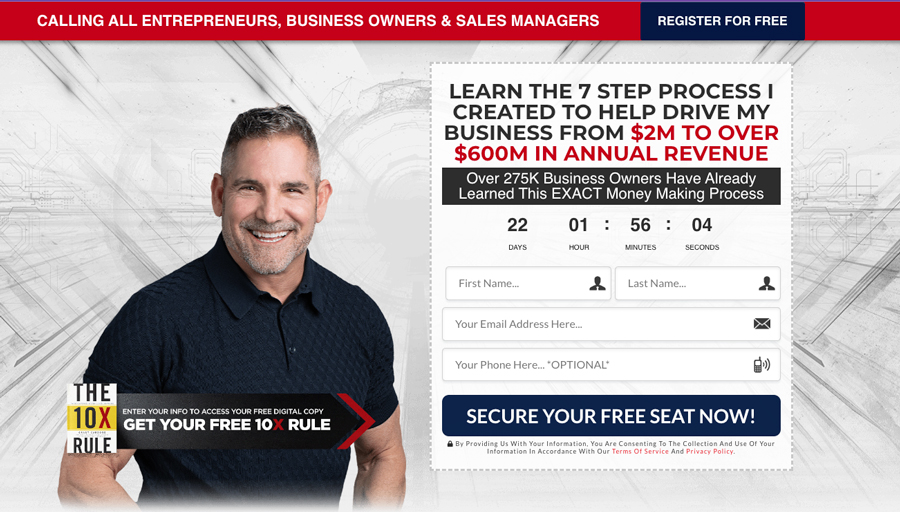After more than 30 years in the real estate game, I’m ready to share my go-to checklist for multifamily investing. If you want to improve your deal evaluation strategy, keep reading to find out what boxes I check off when shopping for real estate.
Before I get into my multifamily investing checklist, there’s something you need to know…
There’s no right or wrong way to do this real estate thing.
The strategies that work for me might not work for you, and vice versa.
So, regardless if you’re an aspiring or established investor, take only what resonates with you from the checklist I’m about to share.
With that in mind, here’s everything I personally think about before I commit to a deal.
My Ultimate Multifamily Investing Checklist
1Number of Units
Look, a lot of people think the most important number in real estate is cap rate. Others vouch for NOI (Net Operating Income) or GRM (Gross Rent Multiplier) as top formulas to keep your eye on.
Of course, you have to take these calculations into consideration. But for me, the single most important number in the game is the number of units.
Think of it this way…
When a recession comes around, small deals tend to have the highest risk of plummeting.
On the other hand, more units translate into more cash flow.
It’s as simple as that.
Sure, you can “ease” into the industry with a duplex. No one’s stopping you.
But do you really think a small property has the potential to generate wealth for you and your family?
Plus, with a duplex, if one unit goes vacant — that’s half your revenue. And you’ll likely be paying out of pocket to cover the shortfall.
On the other hand, with a 32-door unit, if one goes vacant… that’s just 3% of the income.
2Market Research
If you don’t know your real estate market, it’s impossible to make an informed decision.
The opportunity you’re considering could be a massive cash-flowing deal. Or it could be a terrible deal riddled with long-term vacancies…
Research is the way to go. Only when you understand your market inside-out can you seal a deal with full confidence.
And people talk about investing in the path of progress — but how do you know what that is?
I don’t guess, I use the following five criteria to establish the path of progress…
Migration
First, I pull up reports on population growth from sources like the U.S. Census Bureau.
Next, I go through the data and ask the following questions:
- Which states and cities have grown the most in the past six months?
- How many people are moving here?
- Why is there a migration trend here — in this specific area?
You see, when you pick the stats apart, it’s easy to see where people are going. In other words, you’ll be able to identify the regions with the highest potential for strong occupancy rates.
In time, you’ll get into the habit of identifying the latest hotspots as they’re up and coming.
Job Growth
Employment rates go hand in hand with the migration thing from earlier.
Let me explain…
You wouldn’t see tens of thousands of people flocking to Miami this year if there weren’t great job opportunities, right?
In fact, if you dig a little deeper, you’ll see how Miami now holds the crown as the Next Silicon Valley.
What does this mean for you as a real estate investor?
All those young tech execs have their eyes on nice apartments to rent. And the numbers are only projected to rise from now on.
That’s just an example to show you how job opportunities are critical for determining the value of a multifamily deal.
Average Rent
This one is a no-brainer, yet it’s an item you don’t want to miss on your multifamily investing checklist.
Go back to local data and pull these numbers:
- How much do tenants pay to rent a unit in this area today?
- What did the average rent look like a year ago? How about six or three months ago?
- How strong is the rent growth percentage? And does it have the potential to keep going up?
For instance, when I analyze a deal, I’m looking at a $25/$50/$75 rent increase potential — at least.
Multiply that by 100 or 1000 units, and you get the idea.
It’s all about that cash flow, baby.
Location
I’m sure you’ve heard it a thousand times: location, location, location.
Well, the phrase is so popular for a reason.
To find out if an area is worth investing in, start with a bird’s eye view, then get into the nitty-gritty details:
STATE —> CITY —> NEIGHBORHOOD —> APARTMENT COMPLEX
Putting this flow into practice, your winning deal should look a little something like this:
A BEAUTIFUL BUILDING WITHIN AN UPSCALE NEIGHBORHOOD IN THE STATE’S HOTTEST CITY.
If you don’t get the gut feeling of “this is the one” as soon as you step into the building, go look somewhere else.
That ain’t the right deal.
Feedback
Last but not least, the most important yet overlooked part of real estate market research is…
People.
Not the broad statistics, but the individuals from the data.
The current tenants in and around the property you’re interested in.
Believe it or not, when I shop for deals, I drive around the area day and night, park my car near the building, get out, and talk to the people who live there.
When I walk up to a tenant to pick their brain, here are the simple yet effective questions I ask:
- What do you do for work?
- How long did you sign this lease for?
- What’s this neighborhood like?
- Do you like these apartments? How much do you pay for yours?
- How’s the economy here?
You get the gist of the approach.
Anyway, you know what’s the best part of collecting feedback for market research?
Talking to these people won’t cost you a dime.
3Cash Flow
It goes without saying that you should be cash flow positive. Yet you can’t determine that if you don’t know how to calculate cash flow in the first place.
Here’s a simple formula to get you started:
TOTAL INCOME – TOTAL EXPENSES = CASH FLOW
Easy enough, right?
Now, the problem comes when breaking down the income and expenses.
You see, a lot of investors tend to leave out certain items on the list. In other cases, they don’t get specific enough with the expenses that do make it on their multifamily investing checklist.
For example, when you think about “expenses”, go beyond the usual debt servicing payments, taxes, insurance, utilities, and so on.
What about the money you’ll have to put towards advertising? Legal fees? Payroll?
Similarly, “income” isn’t just the rent you collect. Your inflow includes application fees, non-refundable pet deposits, late fees, etc.
When you’re thorough and get the numbers right, you’ll be able to see whether or not the property will cash flow the way you want it to.
And if it won’t? You just saved yourself heartache.
4Future Expenses
While immediate expenses are relevant, it’s also important to consider everything you’ll have to pay for in the future.
Maybe you’ll need a new roof. Or a new HVAC system.
Make sure you’d be willing to have all obvious repair costs for the next 36 months in reserve.
Additionally, if you want the cash to keep on flowing over the years, you’re gonna need a budget for renovations and upgrades.
Now, the specific amount you want to put towards keeping these apartments in tip-top shape is up to you.
But what I do want you to consider is this: high-quality units attract high-quality renters who are in this for the long run.
And remember — if you’re accruing savings for these future expenses every month then you’ll need to factor them in your cash flow calculations as well.
5NOI (Net Operating Income)
Finally, the last piece on my personal multifamily investing checklist is net operating income, also known as NOI.
“You live and die by the NOI,” as I like to say.
Jokes aside though, why is Net Operating Income so important?
Essentially, NOI helps you figure out how profitable your investment could be.
To calculate NOI (Net Operating Income) for a multifamily deal, first you need to calculate your total revenue. Here are the steps for doing that…:
- Take the number of units and multiply by the current rent.
- Multiply the number you get by 12, which represents one year.
- Lastly, subtract 10% from that total to compensate for occupancy.
Next, you’ll need to calculate your total operating expenses. Add together all the expenses you’d have in a year — debt payments, insurance payments, property taxes, repairs, etc.
Then, to calculate NOI, you simply subtract the total operating expenses total revenue.
NOI = TOTAL REVENUE – TOTAL OPERATING EXPENSES
At the end of the day, NOI drives what you should pay for a deal and the debt you can get from a bank.
As an investor, your job is to find out how to increase the NOI — but more on that in another article.
My Final Thoughts on This Multifamily Investing Checklist
There you go. This is the multifamily investing checklist I would bookmark, print, and keep in front of me if I were to start all over again.
Remember — your personal checklist can be different from mine. It all depends on your own real estate goals, budget, interests, and the details which matter the most for you.
But when all is said and done, all I want is for you to figure out How to Create Wealth Investing in Real Estate.
So, grab a pen and paper and start customizing your multifamily investing checklist.
Then, when you get in front of an opportunity, if everything is a go, consider buying the deal.
And if you don’t want the deal, call me.
Be Great,
Grant Cardone
DISCLAIMER:
This content is intended to be used for educational and informational purposes only. You should always do your own analysis based on your own financial and personal circumstances before making any investment. Grant Cardone is an industry expert who has been investing for over 30 years and his opinion is based solely on his own personal experience and circumstances. Grant Cardone’s opinions are not recommendations or endorsements from any of the Cardone Companies. You should perform your own due diligence and seek the advice from a professional to verify any information on our website or materials that you are relying upon if you choose to make an investment. Investment involves great risk and there is no guarantee of performance or results.
We are not attorneys, investment advisers, accountants, tax professionals or financial advisers and any of the content presented should not be taken as professional advice. We recommend seeking the advice of a financial professional before you invest, and we accept no liability whatsoever for any loss or damage you may incur. Any opinions expressed by any participants are not the opinion of CTTI or Grant Cardone and we do not endorse any of the data or opinions given by others.




























You have noted very interesting details ! ps nice site.
I was very happy to find this net-site.I needed to thanks to your time for this wonderful learn!! I positively having fun with each little little bit of it and I’ve you bookmarked to check out new stuff you weblog post.
I haven?¦t checked in here for some time as I thought it was getting boring, but the last several posts are good quality so I guess I?¦ll add you back to my everyday bloglist. You deserve it my friend 🙂